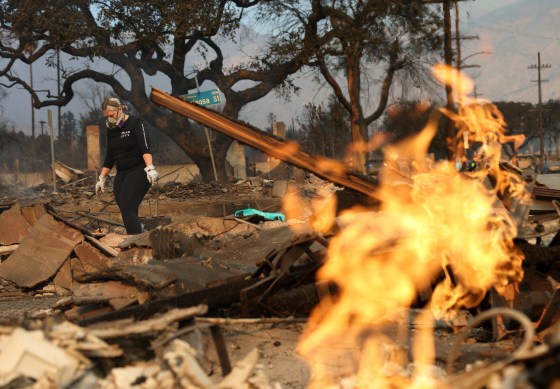
The California Department of Forestry and Fire Protection said Friday that the fatal, wind-fueled Palisades and Eaton fires, which started three weeks ago in Southern California, were completely contained.
In Pacific Palisades, a suburb east of Malibu, the vast Palisades Fire began as a brush fire on the morning of January 7 and swiftly spread due to the dry weather in Southern California.
The Eaton Fire broke out in the foothills of Angeles National Forest in Los Angeles County later that night. Hurricane-force gusts carried it into Altadena communities, where it feasted on seven months of rain-free scrub.
The amount of space created around a fire to prevent its spread is known as containment.
The Los Angeles County Medical Examiner reports that at least 29 individuals were murdered in the two fires—12 in the Palisades Fire and 17 in the Eaton Fire.
Cal Fire says it is investigating the official cause of the fires.
Cal Fire reports that the Palisades Fire destroyed 6,837 structures, damaged 1,017 more, and burned 23,448 acres.
Heavy winds forced flames downward and toward the urban population, feeding the Eaton Fire on an enclave in the foothills of the San Gabriel Valley that was tucked away behind the expansive, mountainous Angeles National Forest.
It damaged 1,073 buildings and destroyed 9,418 in Altadena, a historically inclusive neighborhood well-known for its Black artists and professionals, many of which were century-old mansions. The Los Angeles Conservancy claims that many of the area’s architectural treasures, such as the Zane Grey Estate and the Andrew McNally House, were destroyed.
At a community meeting last week, California Department of Forestry and Fire Protection operations section head Jed Gaines stated that around 4,000 acres of the 14,021-acre fire encompassed residential and urban blocks.
The National Weather Service described the fire weather in Southern California as “about as bad as it gets” due to a mix of drought-like conditions and strong offshore winds. Since October 1, the area has received less than 10% of its typical amount of rainfall.
On January 6, the National Weather Service issued a warning that exceptional fire weather was imminent, describing the situation as extremely dangerous.
The day before the fires, the governor’s office said that he had transferred state fire personnel and equipment to Southern California as a precaution.
While some wildfires, like the Sunset Fire in the Hollywood Hills of Los Angeles, were controlled, doused, and starved of fuel, the majority of attempts to put them out were unsuccessful.
Cal Fire Chief Joe Tyler on Monday attributed the recent storm’s assistance to firefighters battling the catastrophic L.A. fires. The storm brought the first substantial rainfall to sections of Southern California in almost eight months.
He stated on X that the present fire risk has significantly decreased due to rain showers in Southern California.
